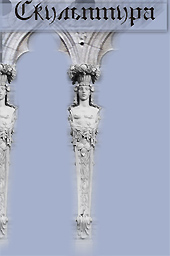
Summary
The statue of goddess Sakhmet, bought from the Academy of Arts in 1852, and the group of the governor of Thebes - Amenemheb with his wife and his mother, - a present from the duke of Leihtenberg, laid the foundation of the Egypt collection of the Hermitage. At the same time some interesting specimens of the late Egyptian sculpture entered the Hermitage from the Laval collection. In 1862 and 1881 the collection of Francisc de Castiglione was transferred to the Hermitage in two parts; this collection had been "bought in 1825 by the Academy of Sciences for the Egyptian Museum" established in the cabinet of curiosities. In 1867 the Hermitage enriched its amount of treasures by adding a small but very interesting and valuable collection of diplomat N. K. Girs. Thanks to its first Egyptologist V. S. Golenishtchev, the Hermitage collection of Ancient Egypt sculpture grew in its Enrichment; in particular, the Museum bought the collections of diplomat P. A. Sabourov and D. N. Bloudov. In 1920 the Hermitage acquired the collection of the deceased academician B. A. Tourayev. Among the specimens of that collection the Museum got a number of excellent pieces of stone plastic art, and some interesting wooden statuettes of slaves and servants which had not been represented in the Museum before. Apart from that the collection of the Hermitage grew in number by means of concentrating different antiquities taken from the Museums of outer districts. One of the latest acquirements of the Hermitage was academician I.I. Tolstoy's collection bought in 1953 and containing some ancient Egypt sculptures.
In the first part of the book the way of the origin and development of antique Egyptian sculpture are traced; and the ideas associated with it, and consider its significance in the life of the egyptians are studied. The part the ancient Egypt sculpture played was diverse and essential. Though a large majority of statues were designated for religious purposes and were hidden in tombs and temples, yet many of them could be easily surveyed. The statues varied in function, they granted definite requests and sculptors often faced complicated problems, as followings: what artistic shape should be given to statue to fullfill the artist's aims; thus when examining a statue, we must know its destination and the ideas associated with it. Otherwise our estimation of the piece may become arbitrary, and very often quite wrong, while its stylistic peculiarities will remain obscure. A thorough examination of the chief names of the statues indicates that they are associated with the ideas - "similarity", "likeness", "incarnation".
The second part of the book is devoted to the study of sculptural memorials of the Hermitage, most part of which is being published for the first time.
The group representing the ruler Wedjaankhdjes wi the his wife, dating as far as the time of ancient kingdom, is of great interest. The examination of iconography and some additional material give ground to date the sculpture as belonging to dynasty IV. This fact lends special value to the sculpture, as it has been sc far the earliest group consisting of two figures of which one is sitting and the other standing.
The description of the head of a wood work cult statue of dynasty VI is being published for the first time.
Apart from the statues of kings of Middle kingdom the portrait of Amenem-hat III in particular, there are some memorials of private persons which are examined as well. The study of these memorials allows to distinguish a number of peculiarities corresponding to different centres of art that had already formed their own traditions. That helps to find out the school to which a certain piece belongs. For instance, we succeeded in finding out that granitic statuette cat n° 10 comes from Kis, granitic statuettes n° 11 and 12 come from Abydos. Among the small pieces of wooden plastic art, the statuette of a woman-musician or a woman from harem presents special interest. Similiar statuettes representing women in a sitting position have been unknown so far; in this respect our statuette is considered to be unique.
According to the statues of private persons of the New kingdom period, the Hermitage collection allows to trace the principal stages of the development of sculpture in XVI-XII с. В. С. Thus, the head of a man (n° 67) reffering to the be ginning of the period has still something in common with the art of the Middle kingdom. The statuette of Maaniamun (n° 68) and the group Sheri (n° 69) already indicate new artistic forms, whereas the wonderful wooden statuette of a youth referring to the period of the end of the XV с B.C., displays a combination of realistic quest with refined elegance characteristic of the time.
The statue of Akhenaten successors period, generally considered curiosities, are well represented in the Hermitage by such typical sculptures as the statue of a man with naos (n° 75), the wonderful family group of Amenemheb (n° 78) and the part of a small head of a man. The peculiarities of the art of XIX-XX dynasty period are well traced in a number of statues and statuettes.
The portraits of king Apries (XXVI dynasty) and Ptolemy II of Macedo-nian'dynasty defined for thejiirst time, are of the greatest interest among the sculptural art of the Later period.
|
ПОИСК:
|
© SCULPTURE.ARTYX.RU, 2001-2021
При использовании материалов сайта активная ссылка обязательна:
http://sculpture.artyx.ru/ 'Скульптура'
При использовании материалов сайта активная ссылка обязательна:
http://sculpture.artyx.ru/ 'Скульптура'